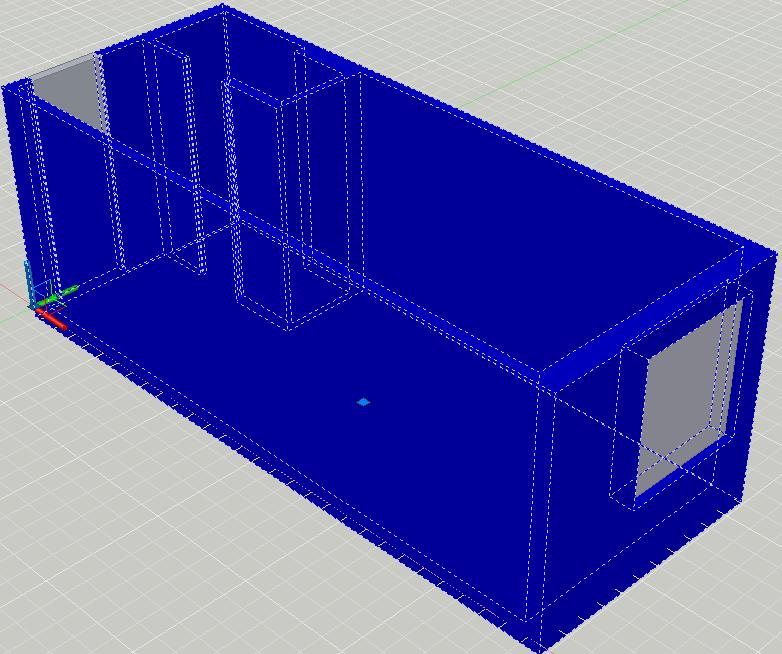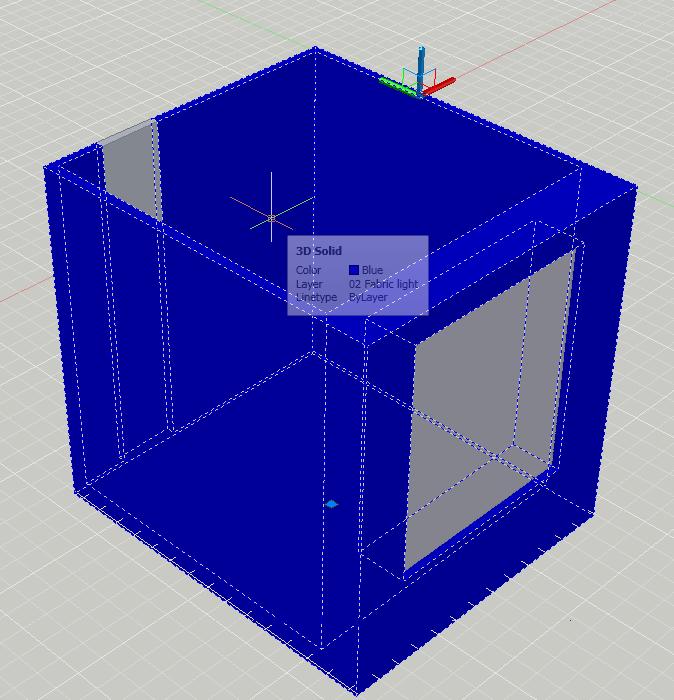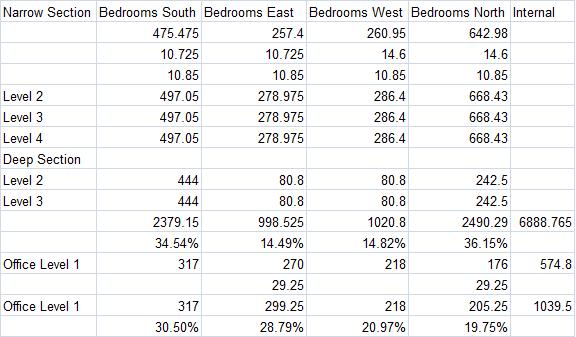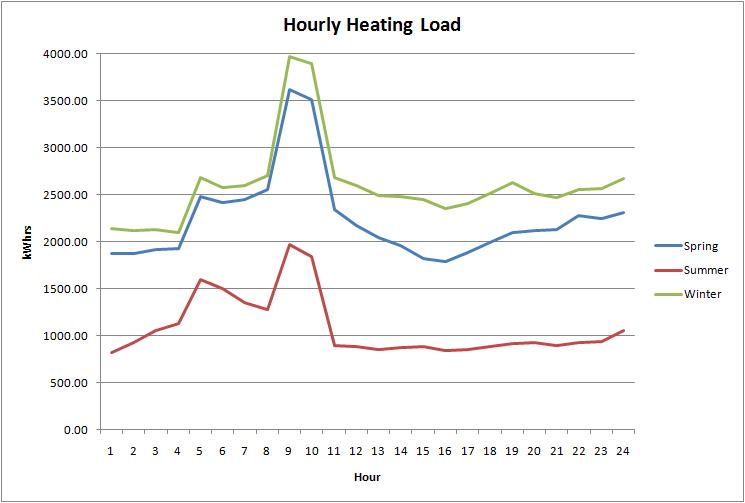Upgrading Strategies For Hospitals
(Golden Jubilee Hospital)
 |
 |
|
|
|
|
Contents |
ESP-r ModelModelling on SBEM will provide a useful method testing varying technologies in the case study hospital. This will give recommendations of what will cause a reduction in CO2 emissions but the heating and cooling load given is measured in monthly intervals. To properly size a CHP system the hourly heating load is required. To model this it was decided that ESP-r should be used. The autocad drawings used to create the models of the bedroom and office are shown below.   To do a thorough analysis of this would require a model that contained the full structure of the hospital. This was not possible to achieve in the time scale on which this project operated. Therefore a suitable alternative was used. This model consisted of:
The composition of the room types are shown in the table below.  For the Bedroom & Office a simulation was run with the Window facing North, South, East and West. This recorded a varied heating load due to the difference in solar gains. In the summer simulations especially the difference between North and South facing orientations was significant. Simulations were run for all room types for a typical day in spring, summer and winter. From information provided by the zoning completed for SBEM it was possible to calculate the percentages of the building covered by each room type. This was then used to calculate the heating load for the total building area. With this and calculations that have been done for the Domestic Hot Water load the following table was created.  This information has been represented graphically below.  What can be seen is that there is that the Domestic Hot Water load has a significant weight on the results and during the middle of the summer day it is the only load upon the current system. These results were then used to match the correct rating of CHP system to the heating load. |
Renewable Energy Systems & The EnvironmentGroup ProjectIt is the hope of the Energy Systems and Environment project team that the information contained in this website will contribute to the relevant field. Please feel free to use any of the findings presented to further your own study, making due acknowledgement where appropriate. |
|